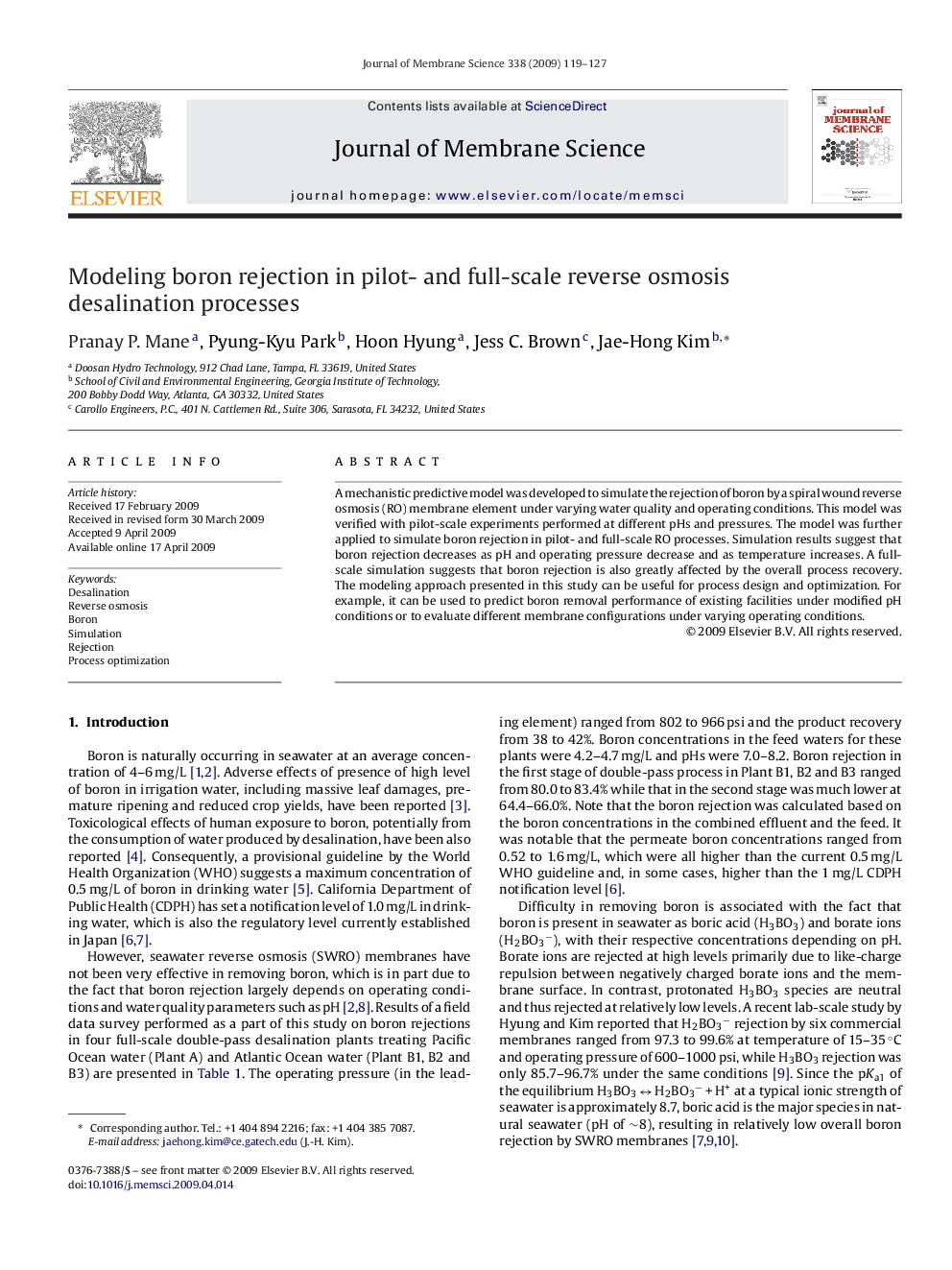| Article ID | Journal | Published Year | Pages | File Type |
|---|---|---|---|---|
| 637013 | Journal of Membrane Science | 2009 | 9 Pages |
A mechanistic predictive model was developed to simulate the rejection of boron by a spiral wound reverse osmosis (RO) membrane element under varying water quality and operating conditions. This model was verified with pilot-scale experiments performed at different pHs and pressures. The model was further applied to simulate boron rejection in pilot- and full-scale RO processes. Simulation results suggest that boron rejection decreases as pH and operating pressure decrease and as temperature increases. A full-scale simulation suggests that boron rejection is also greatly affected by the overall process recovery. The modeling approach presented in this study can be useful for process design and optimization. For example, it can be used to predict boron removal performance of existing facilities under modified pH conditions or to evaluate different membrane configurations under varying operating conditions.
